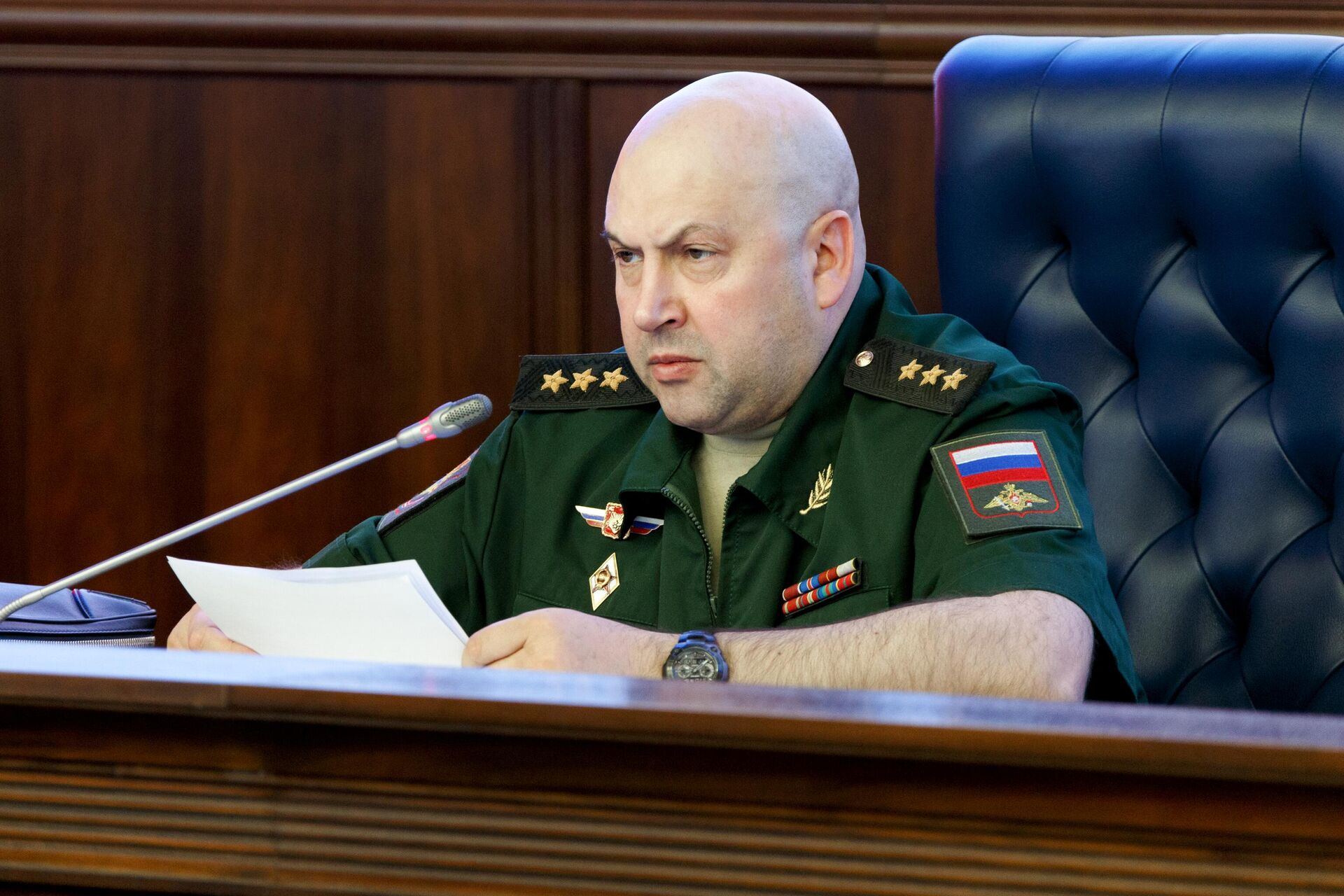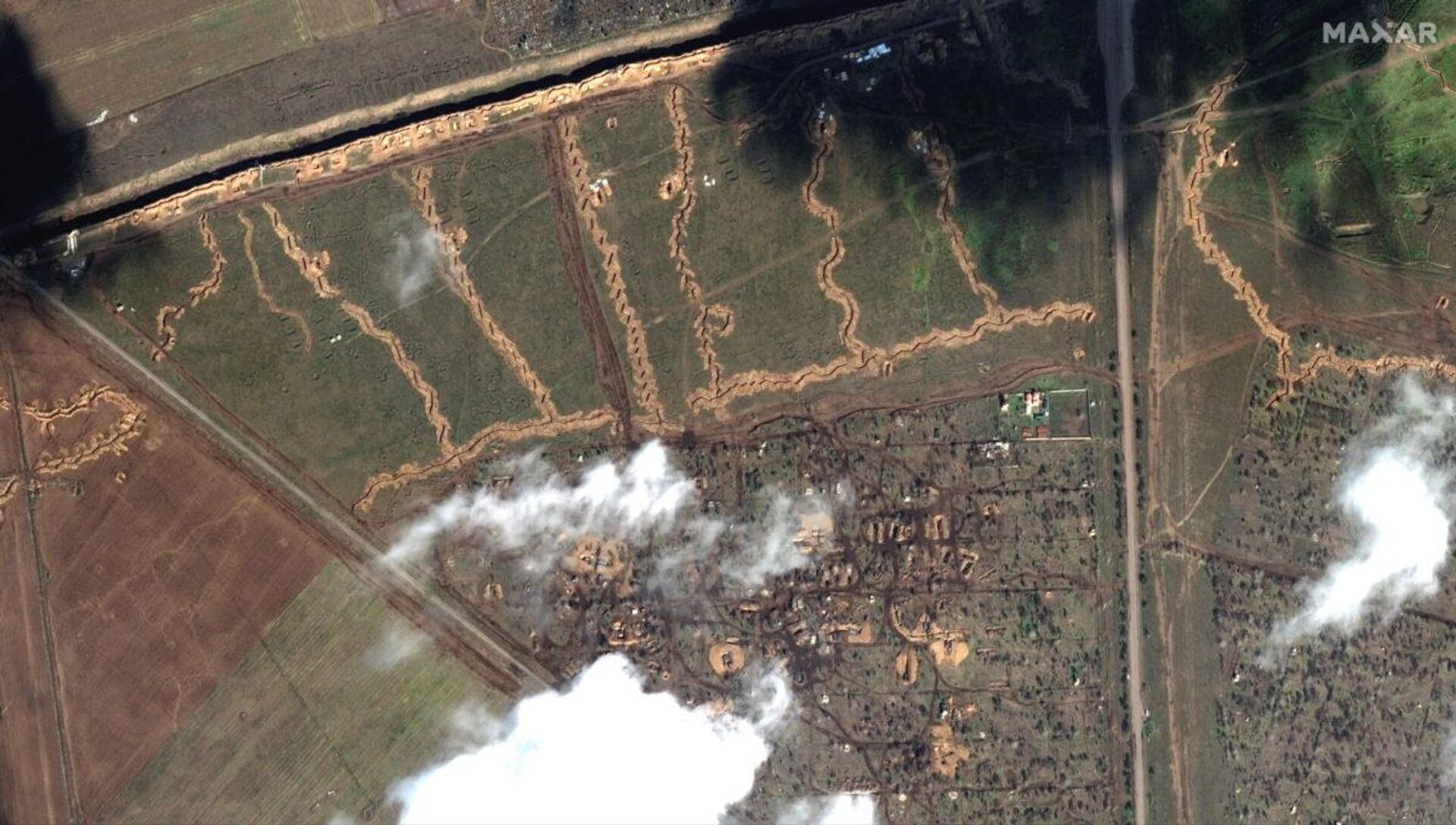What is 'Surovikin Defensive Line' Which Ukrainian Forces Can't Crack?
11:19 GMT 22.06.2023 (Updated: 12:19 GMT 22.06.2023)

© Photo : Maxar
Subscribe
Ukraine’s president has acknowledged that Kiev’s counteroffensive is going “slower than desired,” claiming it’s because of his concern about “people’s lives.” Moscow says otherwise, citing the loss of thousands of Ukrainian troops and hundreds of tanks and armored vehicles for miniscule gains. What’s stopping Kiev’s offensive? Sputnik explains.
A hawkish Estonian ex-top spy revealed this week that Russia’s “long defensive lines” have stopped Ukraine’s counteroffensive dead in its tracks, becoming the latest observer of the NATO-Russia proxy war in Ukraine to admit that the Ukrainian military’s Western alliance-trained, equipped, and armed units have failed to reach any strategic objectives ahead of NATO’s summit in Vilnius next month.
What were these objectives? Kiev has not said publicly, but US media and DC think tanks agree that the main goals seem to be centered around severing the so-called "land bridge" between Crimea and the Russian mainland in the Zaporozhye and Kherson regions, blockading the peninsula, and proceeding with attacks deeper inside Russia.
For the moment, the offensive seems to have sputtered, with Ukrainian forces losing hundreds of troops and dozens of armored vehicles daily, and President Vladimir Putin reporting last week that losses of armor had reached 186 heavy tanks and 418 armored vehicles.
What blunted the offensive? Aside from the bravery and determination of Russian forces, the so-called "Surovikin Line," a term first used derisively by British tabloid media in late 2022, in reference to the construction of defensive positions under the guidance of Sergey Surovikin, the Russian general who served as commander of the Joint Group of Forces in the Special Military Operation Zone between October 2022 and January 2023, has been credited with preventing a Ukrainian advance.
Who is Surovikin? The 56-year-old career soldier has racked up nearly 40 years of service with the Soviet and Russian militaries, and has served as the commander-in-chief of the Russian Aerospace Forces since 2017. A veteran of the Soviet War in Afghanistan, where he served as a special forces commando, he also served as a commander during the Second Chechen War in the 2000s, and in Syria in the 2010s, where his command of Russian forces was credited with helping to turn the tide against a cacophony of Western-backed jihadist militias. Surovikin's efficiency and successes on the battlefield have led Western media to smear him with the cartoonish nickname "General Armageddon," purportedly over his "brutal tactics" and "hardline and unorthodox approach to waging war."

Colonel-General Sergei Surovikin, who served as commander of Russian forces in the special operation in Ukraine between late 2022 and early 2023.
© Sputnik / Russian Defense Ministry
What Makes Up the Surovikin Defensive Line? For reasons that should be clear, the Russian military hasn’t exactly rushed to provide details about the exact makeup of its defensive positions. However, media reports and analyses indicate that the defensive lines consists of a complex, multilayered network of infantry trenches, anti-personnel and anti-tank minefields, anti-tank dragon’s teeth (meter-tall concrete structures designed to slow the advance of enemy armor), as well as elevated earthen berms to shield military equipment. The defensive lines, which run nearly 2,000 km through Kherson and Zaporozhye, as well as Crimea, Donetsk, Lugansk, and Russian regions bordering Ukraine to the north, are partially visible to military planners in Kiev thanks to the armada of NATO satellites tracking the situation on the battlefield.

Elaborate network of trenches and fortifications in Crimea as part of Russia's 2,000 km long defensive lines.
© Photo : Maxar
But Kiev’s ability to destroy this infrastructure is limited by several factors:
1.
total Russian air superiority 2.
limited ability to target Russian fortifications using artillery and missiles due to the constant threat of counterattacks by Russian airpower and artillery 3.
effective Russian use of maskirovka (lit. "masking," "camouflage," or "disguise") tactics, involving the use of dummy equipment, decoys, disinformation, and deception operations to misdirect and confuse the enemy 4.
the sheer length of the fortified front line, which runs from Kherson in the south to Russia’s southern border with Belarus in the north.
